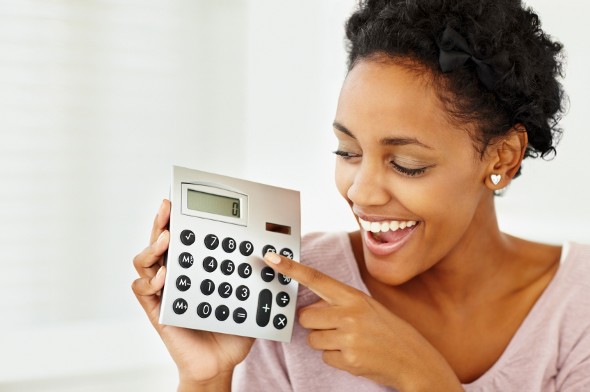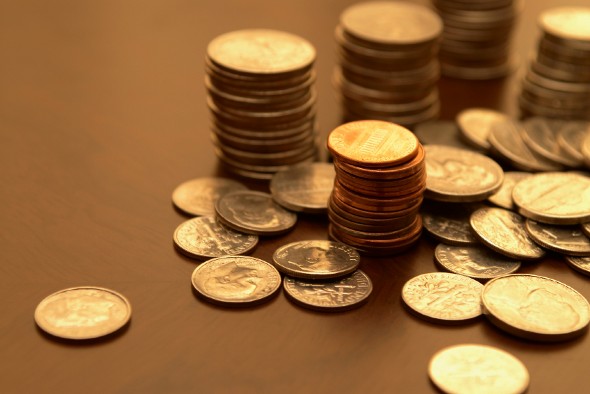Owning real estate can be a lucrative venture. But as with any investment, you’ll have to be prepared to tolerate a certain amount of risk. If you’re planning to buy a property for the sole purpose of renting it out, figuring out the cap rate can help you gauge what kind of return you’ll see on your investment. Here’s a rundown of what the cap rate is, how to calculate it and why it matters.
A financial advisor can also help you determine where a real estate investment might fit into your overall financial plan and goals.
Cap Rate Definition
Cap rate is short for capitalization rate. Simply put, it’s a way to measure a real estate investment’s profitability. You can estimate the cap rate for both commercial and residential investment properties to get a ballpark idea of the rate of return you’re looking at.
Calculating the Cap Rate

The cap rate is expressed as a percentage, and there’s a specific formula you can use to calculate it. First, you’ll need to figure out the property’s net operating income (NOI). This is all the revenue a property generates over the course of a year minus the total amount of money required to maintain it.
If the property you have your eye on is already being rented out, you can look at the total rental cost for the past year. If it’s vacant, you’ll have to look at comparable properties to get a sense of what kind of income it stands to generate.
From there, you can add up all of the expenses associated with managing the property. That would include things that you’re responsible for paying, such as insurance, property management fees, property taxes and maintenance fees.
Once you’ve calculated the NOI, you’ll need to divide that number by the property’s sale price and multiply it by 100 to get the cap rate. For example, let’s say you’re considering a property that’s priced at $350,000 and the NOI comes to $25,000 a year. The cap rate in that scenario would be just over 7%, which is the amount of profit you could reasonably expect to see from year to year.
Check out our property tax calculator.
Why the Cap Rate Is Important
Investors need to pay close attention to a property’s cap rate for several important reasons. This metric provides key insights into the potential profitability and risks associated with a real estate investment, serving as a valuable decision-making tool. Here are five reasons why the cap rate is important.
1. A Tool for Comparing Investment Opportunities
When evaluating multiple prospective properties, the cap rate can help narrow the field. By calculating the cap rate for each property, investors gain a clearer picture of which option may yield the highest return. For instance, if you’re deciding between three properties, a higher cap rate often indicates greater profitability. This comparison allows you to focus on properties that align with your financial goals while steering clear of less promising opportunities.
2. Insight into Property Value and Market Trends
The cap rate can reveal whether a property is overpriced by comparing its potential revenue to market trends or benchmarks. A high cap rate might indicate undervaluation, while a low cap rate could signal an overpriced asset. Additionally, examining the property’s historical cap rate performance offers valuable context. If the cap rate has consistently lagged behind market trends, this may suggest underlying issues with the property’s revenue generation or management.
3. Filtering Properties That Don’t Meet Your Investment Criteria
Investors often establish a baseline rate of return as part of their investment strategy. The cap rate serves as a quick litmus test to determine whether a property meets this threshold. For example, if your minimum acceptable cap rate is 8%, any property falling below that benchmark can be excluded immediately. This saves time and ensures your focus remains on opportunities aligned with your financial objectives.
4. Estimating the Payback Period
The cap rate is also a useful tool for estimating how long it will take to recover your initial investment. By dividing 100 by the cap rate, you can calculate the payback period in years. For example, a property with a 10% cap rate would have a 10-year payback period. This information is crucial for investors who prioritize recouping their investment quickly to reinvest in additional properties or other ventures. Generally, higher cap rates are more favorable, as they suggest faster payback and higher returns.
5. Balancing Risk and Reward
While higher cap rates often signal better returns, they can also indicate higher risk. Properties with unusually high cap rates may face challenges such as location disadvantages, maintenance issues or fluctuating market demand. Conversely, lower cap rates often suggest stable, low-risk investments but with potentially lower returns. Understanding this trade-off is essential for crafting a balanced portfolio that aligns with your risk tolerance and long-term goals.
Bottom Line

The cap rate is intended to be a snapshot of sorts for a specific property at a specific point in time. But it’s not very helpful for comparing properties held for a short period of time. That’s because the cap rate measures a property’s profitability on a yearly basis. The cap rate is just one of several factors you’ll need to keep in mind when evaluating a real estate investment opportunity.
Real Estate Tips
- Finding a financial advisor doesn’t have to be hard. SmartAsset’s free tool matches you with vetted financial advisors who serve your area, and you can have a free introductory call with your advisor matches to decide which one you feel is right for you. If you’re ready to find an advisor who can help you achieve your financial goals, get started now.
- Before investing in real estate, it helps to know what you’re getting involved in. Our guide can give you an idea of what to expect, as well as various real estate investing strategies investors commonly use.
Photo credit: ©iStock.com/dem10, ©iStock.com/GlobalStock, ©iStock.com/g-stockstudio
